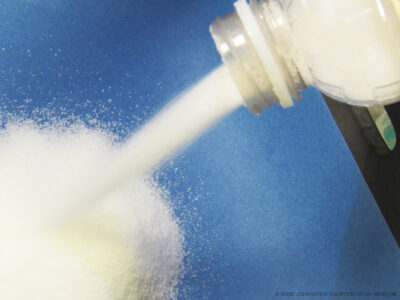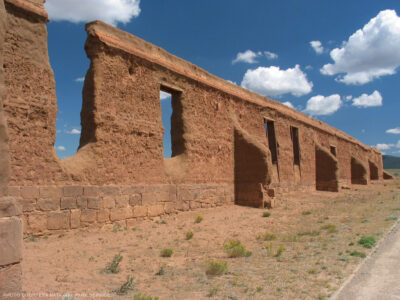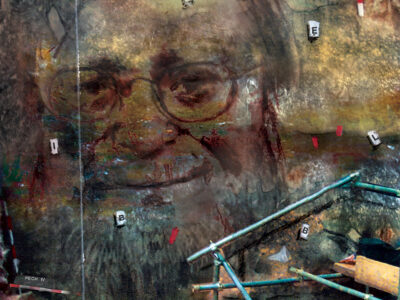
On September 7 a boat made of reeds and black bitumen tar set sail for India from Oman in an attempt to recreate voyages of 4,500 years ago. It now lies at the bottom of the Arabian Sea—which proves they just don’t make Bronze Age boats like they used to.
Much more buoyant is the optimism of Dr. Gregory Possehl, curator of the Penn Museum’s Asian section and co-director of the Joint Hadd project—which he believes will ultimately produce a seaworthy vessel that sheds light on maritime commerce between the Indus Valley civilization and ancient Oman.
Possehl is quick to note that no one got hurt when the Black Boat of Magan sank 15 miles after embarking from the port of Ra’s al-Hadd with its architect, Tom Vosmer, and a crew of Italian graduate students on board. A rescue craft was on the scene immediately, he says. “It was as under control as a sinking ship gets.”
He and the other co-directors (Dr. Maurizio Tosi from the University of Bologna and Dr. Serge Cleuziou of the Centre National de la Recherche Scientifique in Paris) watched from the deck of the HMSS Fulk as-Salaam, a yacht owned by the Sultan of Oman. “We were all devastated,” he says. “The next morning we sat together and talked about what went wrong. We think there was a design flaw … and we want more time for a sea trial.” The good news is that the government of Oman, which sponsored the voyage, “remains committed to building a reed boat that’s going to sail to India.”
The international effort was inspired by ancient texts and archaeological evidence pointing to extensive sea trade—and the use of reed boats—during the third millennium B.C. among the civilizations of the Persian Gulf and Arabian Sea.
The archaeologists spent several years designing different versions of the Magan—so named for an ancient place described in Sumerian texts that is believed to be Oman—and ended up with a 12-meter vessel that looked “very tight,” Possehl says.
They stocked the boat with such Bronze Age travel food as dried fish, dates, and honey, and budgeted a generous few weeks for the 600- to 900-mile crossing. The archaeologists calculated that the September winds would carry the vessel faster than that to either the tip of the Indian state of Gujarat or to the mouth of its Sabarmati river, but the trip was cut short when water leaked into the boat.
With backing from the Omani government, the team will make design changes and construct two more boats: Magan 4 will sail to islands near Oman that were settled in the fifth millennium B.C. Magan 5 will be built partially and modified for the full Oman-to-India journey as they learn more from sea trials.
“We really don’t know what these boats looked like and this is entirely unknown technology,” Possehl said. “We are reinventing what master crafters and mariners invented 4,500 years ago and was lost and forgotten. So this is a daunting task.”
—S.F.




